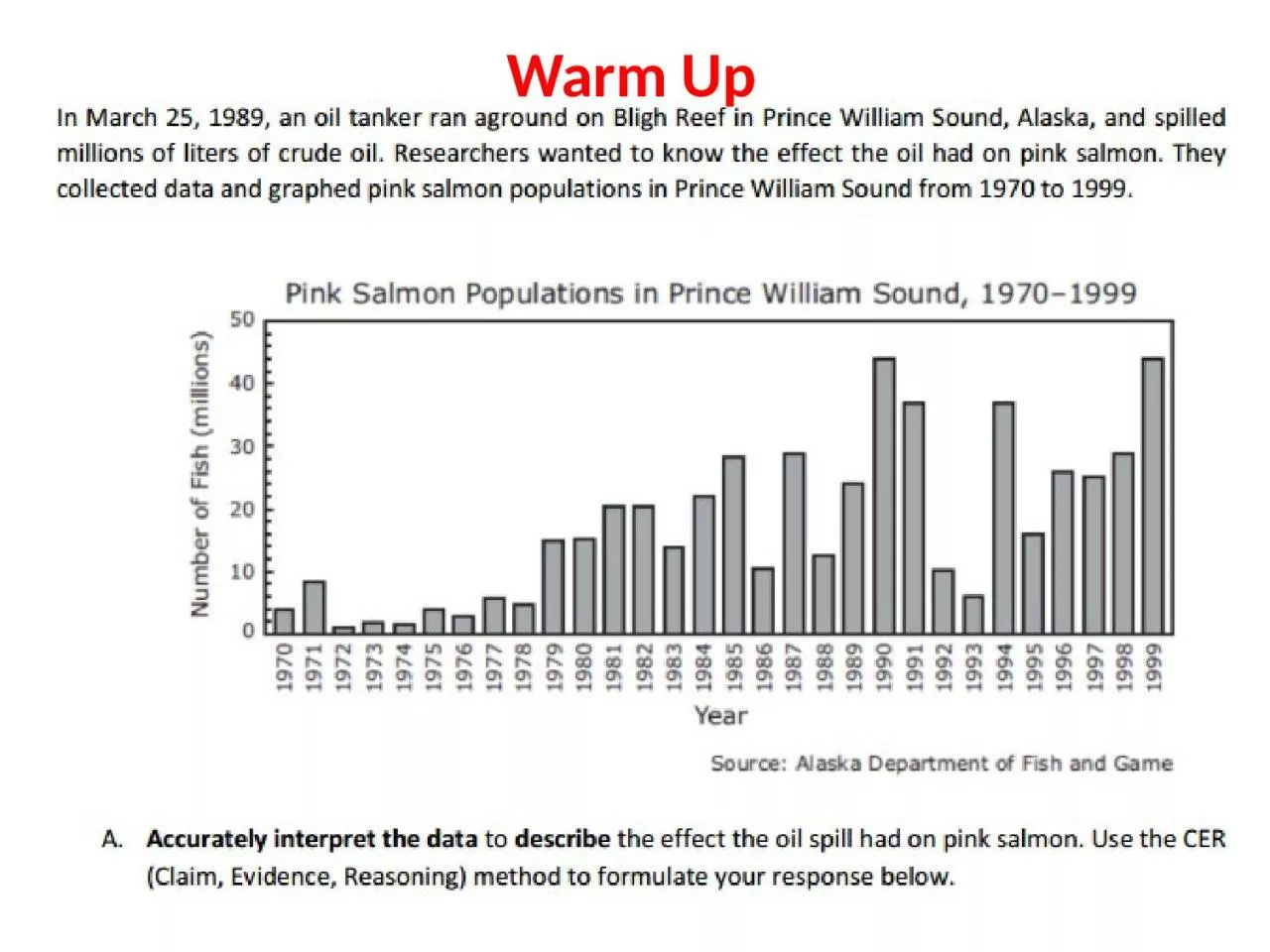

mins 1 min presentations each Objective of the day Analyze how events and processes during ecological succession can change populations and species diversity Homework W rite definitions ID: 1026033
Download Presentation The PPT/PDF document "` Warm Up Cycle Posters 10" is the property of its rightful owner. Permission is granted to download and print the materials on this web site for personal, non-commercial use only, and to display it on your personal computer provided you do not modify the materials and that you retain all copyright notices contained in the materials. By downloading content from our website, you accept the terms of this agreement.
1. `Warm Up
2. Cycle Posters10 mins!1 min presentations each
3. Objective of the dayAnalyze how events and processes during ecological succession can change populations and species diversity.
4. HomeworkWrite definitions for: ecologyhabitatcommunityecosystemabiotic factorbiotic factorbiodiversitypioneer speciessuccessionprimary successionsecondary successionEcological Succession wsQuiz Mon/Tues
5. Concept: Disturbance influences species diversity and compositionDecades ago, most ecologists favored the view that communities are in a state of equilibriumRecent evidence of change has led to a nonequilibrium model, which describes communities as constantly changing after being buffeted by disturbances (such as fire)(a) Soon after fire(b) One year after fireYellow stone national park- 1988
6. Ecological SuccessionEcological succession is the sequence of community and ecosystem changes (colonized by a variety of species, gradually replaced by other species) after a disturbance: volcanic eruption or a glacier, strip away all the vegetation.Primary succession occurs where no soil exists (lifeless area) when succession begins. Autotrophic and heterotrophic prokaryotes and protists. Lichens and moss will first colonize the land when soil develops gradually. Then grasses, shrubs, trees will sprout.Secondary succession begins in an area where soil remains after a disturbance. Recolonization starts with herbaceous species.Early-arriving species and later-arriving species may be linked in one of three processes:Early arrivals may facilitate appearance of later species by making the environment favorableThey may inhibit establishment of later speciesThey may tolerate later species but have no impact on their establishment
7.
8. Human DisturbanceHumans have the greatest impact on biological communities worldwideHuman disturbance to communities usually reduces species diversityHumans also prevent some naturally occurring disturbances, which can be important to community structure Logging and clearing for urban development, mining, farming, deep sea trawlers.
9. Changes in Ecosystems:Ecological Succession
10. What is Ecological Succession?Make up of a community changes over time.Can be primary or secondary The gradual replacement of one plant community by another through natural processes over time
11. Primary SuccessionBegins in a place without any soil: Sides of volcanoesLandslidesFloodingFirst, lichens that do not need soil to survive grow on rocksNext, mosses grow to hold newly made soilKnown as PIONEER SPECIES
12. Pioneer SpeciesLichens break down rock to form soil.Low, growing moss plants trap moisture and prevent soil erosion
13. Primary SuccessionSoil starts to form as lichens and the forces of weather and erosion help break down rocks into smaller piecesWhen lichens die, they decompose, adding small amounts of organic matter to the rock to make soil
14. Primary SucessionPurpose to build and rebuild soil.
15.
16. Primary SuccessionSimple plants like mosses and ferns can grow in the new soil
17. Primary SuccessionThe simple plants die, adding more organic material (nutrients to the soil)The soil layer thickens, and grasses, wildflowers, and other plants begin to take over
18. Primary SuccessionThese plants die, and they add more nutrients to the soilShrubs and trees can survive now
19. Primary SuccessionInsects, small birds, and mammals have begun to move into the areaWhat was once bare rock, now supports a variety of life
20. Secondary SuccessionBegins in a place that already has soil and was once the home of living organisms Occurs faster and has different pioneer species than primary succession Example: after forest fires
21.
22.
23.
24.
25. Climax CommunityA stable group of plants and animals that is the end result of the succession processDoes not always mean big treesGrasses in prairiesCacti in deserts
26.